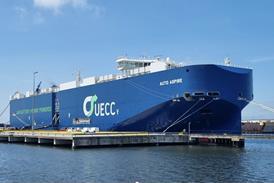The volatility of volumes in the vehicle logistics sector causes huge dilemmas for providers. LSPs plan capacities with a degree of flexibility built in, but artificial peaks at the end of the month are creating more flagrant variations between forecasted volumes and the actual capacity that the industry can afford to sustain. Contracts should do more to take these variations into account.
If we highlight the efficiency of the supply chain from the factory to the dealer, the OEM functions are not all aiming for the same target. While car assembly is a stable and strongly designed process, this stability is disrupted once the vehicles leave the factories, with the sales organisations driving many changes. Some variation is external and unavoidable, such as the UK registration periods in March and September or summer factory shutdowns. But often there are incentives or rush orders to inflate sales figures to the right target at the end of the month and the end of each quarter for financial reports. Not only does this ‘false peak’ have no real financial or service gain, it makes capacity planning for LSPs a nightmare. As the above table demonstrates, there is a strong deviation of registrations in Europe, which also differs greatly between countries.
When OEMs tender business, they buy an ‘average capacity’ of trucks, rail wagons, vessels and compounds at a certain price. Logistics companies invest according to these forecasts. Flexibility is crucial and a range of 15% should be within the expertise of any operator. LSPs can achieve this flexibility via subcontractors, collaboration and load exchange with competitors and proactive planning with customers. But the variation in the case of month or quarter end can deviate as much as 200-400% from average forecasts.
At the extreme end of this variation providers are left performing transport by improvisation rather than the tools in which they have invested, including IT systems, GPS and RFID. Logistics operators also have to adapt their operations according with the planning of driver holidays, maintenance programmes and by shifting fleets from one region to another.
A fairer deal
As vehicle operators work in round-trip patterns, a factory hold or change in priority somewhere in the chain will disturb the whole traffic flow. Meanwhile, OEM purchasing departments have adopted contracts with malus systems including penalties and cancellation clauses. As the reasons for these variations are beyond the control of LSPs–and often the logistics management at OEMs–they need to lobby for a fairer volume clause.
The current model should imply that if OEMs need more volume to be delivered, a certain amount of renegotiation or subcontracting should be implemented and more capacity must be acquired. LSPs should not be punished if OEMs push out more volume on short notice. At the same time a minimum volume order policy should be put in place, with compensation clauses for providers if forecasts are not within 15% of actual volume.
Smarter definitions can also be made in the delivery process by extending the lead time of unsold cars while giving sold units priority at a premium service level.
Volatility and changing market demands will always be a factor in this business, but given the precarious financial position of logistics operators, most are unable to take any further investment risk to compensate for these extreme variations.
Franz Blum, Vega International & Konrad Zwirner, ECG commissioner for land transport
































